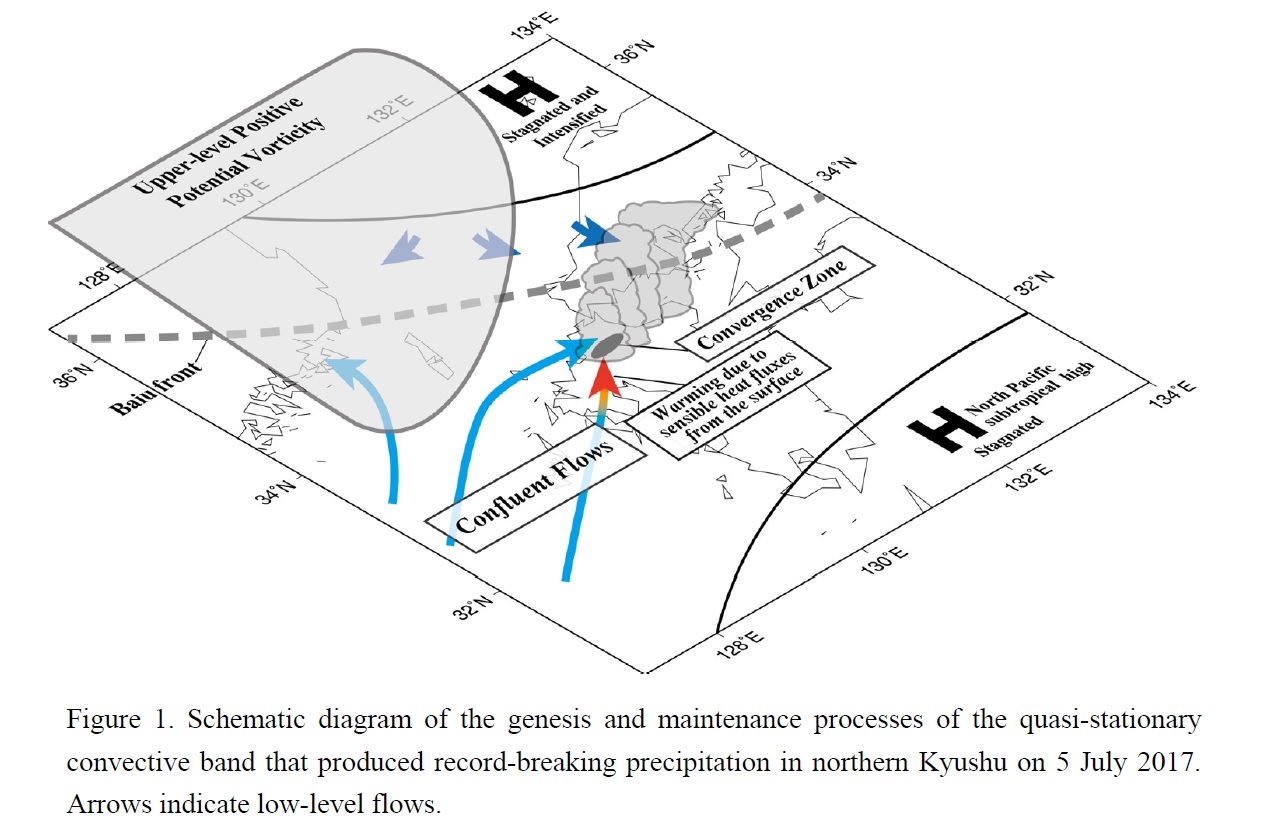Graphical Abstract
Kawano, T., and R. Kawamura, 2020: Genesis and maintenance processes of a quasi-stationary
convective band that produced record-breaking precipitation in northern Kyushu, Japan on 5 July
2017. J. Meteor. Soc. Japan, 98, 673-690.
Special Edition on Extreme Rainfall Events in 2017 and 2018
https://doi.org/10.2151/jmsj.2020-033
Graphical Abstract
Plain Language Summary:
A quasi-stationary convective band that persisted for approximately ten hours caused precipitation in the northern part of Kyushu Island, Japan on 5 July 2017. The extreme amount of rainfall produced by this convective band caused a number of landslides and flash floods and resulted in a severe disaster. The Weather and Research and Forecasting (WRF) model
simulations revealed that a quasi-stationary convergence zone in the low level played a crucial role in generating and maintaining the convective band.
Highlights:
- Low-level confluent flows due to the blocking effects of a high pressure system located over the Sea of Japan were responsible for the formation, intensification, and sustenance of the convergence zone.
- The frontal structure of the convergence zone was intensified due to the land-sea thermal contrast between Kyushu Island and the Tsushima Strait.
- Topography and a cold pool due to raindrop evaporation played only minor roles in the genesis and maintenance of the convective band.







